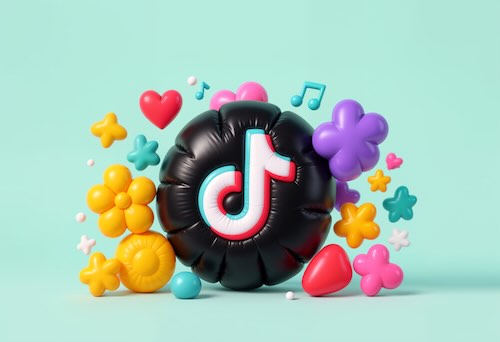In today's digital age, social media isn't just a platform for sharing updates—it's a treasure trove of insights waiting to be tapped. Brands that harness the power of social media listening can transform raw data into actionable strategies, enhancing customer engagement, refining brand responses, and staying ahead of competitors. This blog delves into real-life examples of how top brands utilize social media listening, the lessons they impart, and how Phyllo's suite of tools can empower your brand to do the same.
What Is Social Media Listening?
Before diving into the examples, it's essential to understand what social media listening entails.
Definition
Social media listening involves monitoring digital conversations to understand what customers are saying about a brand, industry, or specific topics. Unlike social media monitoring, which tracks mentions and keywords, social listening delves deeper into the context, sentiment, and intent behind those conversations. It uncovers not just what is being said, but why and how consumers feel, fueling more strategic and responsive brand actions.
Key Components
- Sentiment Analysis: Determining whether the conversation is positive, negative, or neutral.
- Trend Identification: Spotting emerging topics or discussions.
- Competitor Analysis: Understanding how competitors are perceived and performing.
- Customer Feedback: Gathering insights on products, services, or brand perception.
Modern listening tools also parse emojis, images, and video mentions, providing even richer insights for advanced brands.
Industry Impact: Why Social Media Listening Matters Now
Social media listening is now a cornerstone for nearly every sector. According to Social Media Today, over 89% of high-performing companies use social listening to analyze consumer behavior, and 88% of agencies rank it as business-critical. The top priorities for organizations in 2025 are direct engagement with audiences and sophisticated listening to unseen signals, according to Hootsuite’s latest social trends report.
- Crisis Prevention: Early warning of customer discontent lets brands act fast, with real-time alerts cutting resolution time by up to 5x compared to manual monitoring.
- Product Innovation: Deloitte reports that 62% of top product teams use social listening insights to guide roadmap decisions and launch features customers actually desire.
- Customer Trust: Brands able to spot and address issues transparently build long-term confidence and loyalty.
Read more:
How to Vet Influencers Using LinkedIn, Instagram & TikTok APIs [2025 Guide]
Top Instagram Graph API Use Cases in 2025 for Brands and Platforms
How Social Media Listening APIs Help Find Influencers Faster
Step-by-Step Process: Building a Social Listening Strategy
To get measurable results, brands should approach social media listening strategically:
1. Set Clear Objectives
Determine if the goal is crisis prevention, reputation management, product development, influencer vetting, or campaign optimization.
2. Choose Tools and Channels
Select a robust listening platform that covers all relevant social, blog, news, and video channels (like Phyllo, Sprout Social, Brandwatch, or Talkwalker). Make sure it offers real-time AI alerts, sentiment analysis, and data export for team collaboration.
3. Build Your Topic and Keyword List
Identify brand names, product lines, campaign hashtags, competitor names, common pain points, and trending phrases. Use Boolean search logic for powerful filtering.
4. Monitor and Analyze Data
Set up dashboards to track sentiment, volume spikes, emerging themes, and influencer activity. Schedule weekly reviews and spot trends monthly for strategic direction.
5. Act on Insights
Respond to customers, escalate crises quickly, adapt messaging, update products, or launch new features based on customer needs and opportunities discovered.
6. Measure and Share Outcomes
Track engagement, sentiment shifts, campaign ROI, and lead generation before and after implementing insights. Share progress across PR, marketing, product, and customer support teams.
7. Refine Tactics Regularly
Continuous improvement is key—adjust keyword lists, alert levels, and team workflows as market conditions change.
Listening Examples: How Brands Tune into Their Audiences
1. Glossier: Building a Brand from Customer Conversations
Glossier, the beauty brand, has masterfully used social media listening to shape its product offerings. By actively engaging with customers on platforms like Instagram and Reddit, Glossier identified product gaps and areas for improvement. For example, the widely loved "Boy Brow" product originated from direct customer discourse. This approach created a loyal following and ensured each product had a built-in market.
2. Netflix: Monitoring Viewer Sentiment for Content Strategy
Netflix employs social listening to gauge reactions to its shows and movies. By tracking topics, sentiment, and viewing trends, Netflix feeds data directly into production decisions. This analysis helps secure viral hits and avoids costly misfires.
3. Nike: Engaging with Social Movements
Nike monitors conversations around equality and justice. Through real-time listening, Nike rolled out campaigns such as "Dream Crazy" with Colin Kaepernick, harmonizing brand values with audience priorities and boosting loyalty.
4. Ryanair: Turning Negative Feedback to Brand Virality
Ryanair responds to complaints and criticism not with boilerplate apologies but with witty, sometimes sarcastic comebacks, amplifying its online presence and setting itself apart. Their strategy, informed by social listening, sparked over 2,000 viral mentions and boosted total share of voice by 8% after just one campaign.
5. Stanley: Authentic Crisis Management
Viral social media moments—like a customer’s Stanley tumbler surviving a car fire—became opportunities for positive brand exposure. Stanley’s CEO responded personally, driving 84% admiration and joy in brand mentions.
Brand Response Examples: Turning Insights into Action
Lyft
After a rider’s lost cat story went viral, Lyft’s CEO joined the conversation. Their prompt and personal response turned a potential crisis into customer advocacy.
Starbucks
Publishes transparent public apologies and resolutions to complaints, building trust and reinforcing customer-first values.
Delta Airlines
Reaches out to delayed passengers discovered through listening, offering customized apologies and compensation.
Customer Engagement Examples: Creating Meaningful Interactions
Wendy’s
Listened to feedback and created the “4 for $4” deal, increasing sales and customer loyalty.
Spotify
Crafts playlists like “Discover Weekly,” using listening data to tailor music discovery for users, driving engagement.
Lego
Co-creates products with fans by listening on social channels and through their Ideas platform, bringing sets like “Women of NASA” to life.
Measuring ROI: Social Listening’s Quantifiable Value
Listening isn't just qualitative—it delivers clear financial results:
- Uber: Used app feedback collected via listening to resolve navigation pain points, resulting in a 7% uplift in app usage and a 24% spike in online visibility.
- Penn State Health: With Sprout Social Listening, spotted conversation trends, addressed potential crises early, and improved patient trust.
- Industry stats: 78% of consumers expect brands to respond to negative social comments within 24 hours; brands using real-time alerts outperform rivals by up to 400% in retaining customers during crises.
- Stanley: A single listening-driven viral response netted the brand tens of millions of positive impressions and a measurable reputation lift.
Read more:
How to Use the Instagram Analytics API to Understand Your Audience
Instagram Target Audience and Demographics in 2025: Who Uses Instagram Today?
YouTube API and API Key Explained: How to Get Started in 2025
The Role of Phyllo in Social Media Listening
In a digital ecosystem flooded with conversations, brands need more than raw data—they need actionable insights. Phyllo provides a suite of advanced tools designed to make social media listening smarter, faster, and more impactful. By leveraging Phyllo’s products, businesses can uncover trends, engage meaningfully with audiences, and safeguard brand reputation.
1. Social Listening API
Phyllo’s Social Listening API centralizes data from multiple social platforms, including Instagram, TikTok, YouTube, and more. It goes beyond basic keyword tracking by applying AI-driven sentiment analysis and trend detection.
Key benefits:
- Real-time insights: Monitor conversations as they happen, enabling immediate engagement or campaign adjustments.
- Sentiment tracking: Understand whether mentions are positive, neutral, or negative, helping prioritize responses.
- Trend identification: Detect emerging topics or viral content that can influence marketing strategies.
Use case:
A fashion brand can track mentions of a newly launched product across platforms and adjust its advertising or promotional strategy based on audience sentiment and emerging trends.
2. Social Screening
Phyllo’s Social Screening allows brands to evaluate creators and influencers before collaborations, ensuring they meet compliance, audience quality, and engagement standards.
Key benefits:
- Safety and compliance: Identify potential risks in influencer behavior or content that may conflict with brand values.
- Audience quality checks: Verify the authenticity of followers and engagement rates to prevent wasted marketing spend.
- Data-driven decisions: Make informed collaboration choices based on comprehensive social profiles rather than assumptions.
Use case:
A beverage brand looking to partner with TikTok influencers can filter creators with high-quality audiences while avoiding potential controversies.
3. Social Media Intelligence
Phyllo’s Social Media Intelligence platform combines AI for both visual and text-based content, providing deeper understanding of audience interactions.
Key benefits:
- Text sentiment analysis: Evaluate the tone of posts and comments to measure audience perception accurately.
- Visual content insights: Analyze imagery to determine context, brand exposure, or campaign effectiveness.
- Targeted campaigns: Use insights to refine messaging, content strategy, and creative direction.
Use case:
A consumer electronics company can assess how users showcase their products in posts and stories, using that insight to inform future ad campaigns and product designs.
4. Influencer Vetting for Brand Safety
The Influencer Vetting tool allows brands to proactively assess influencer authenticity, online behavior, and risk factors.
Key benefits:
- Risk mitigation: Detect potentially harmful behavior or controversies before partnering with creators.
- Authenticity validation: Ensure influencer profiles, followers, and engagement metrics reflect real, active audiences.
- Strengthened partnerships: Collaborate with creators whose values align with the brand, enhancing credibility.
Use case:
A skincare brand can vet influencers for controversial content, ensuring partnerships enhance brand reputation instead of compromising it.
By integrating these tools, Phyllo empowers brands to move beyond basic monitoring and make informed, strategic decisions. Whether the goal is to understand sentiment, protect brand safety, or engage meaningfully with audiences, Phyllo provides the data and intelligence needed to drive results.
Frequently Asked Questions:
1. What's the difference between social media listening and social media monitoring?
Social media monitoring focuses on tracking mentions, hashtags, tags, and direct references to your brand or products. It provides quantitative data—how often your brand is mentioned, on which platforms, and by whom. Social media listening goes further by analyzing the context, sentiment, and underlying meaning behind these mentions. It helps brands understand why customers are talking about them, what emotions are associated with the conversations, and emerging trends.
Example: Monitoring might alert a brand that 500 people mentioned their new product today. Listening would reveal that the majority of these mentions express frustration about a specific feature, allowing the brand to respond proactively.
2. How can social media listening improve customer engagement?
Social media listening gives brands actionable insights to craft personalized content and respond meaningfully. By understanding audience sentiment and preferences, brands can address concerns, highlight popular features, and spark conversations that resonate with their target audience.
Example: A food delivery service notices a trend where users request vegan options. Using listening insights, they can promote relevant menu items and respond to users asking about dietary options, which increases engagement and fosters customer loyalty.
3. Can social media listening help in crisis management?
Absolutely. Social media listening enables brands to detect potential issues early, whether it’s a viral complaint, a controversial incident, or negative sentiment about a campaign. By surfacing these issues in real time, brands can respond quickly and empathetically, preventing minor issues from escalating into major PR crises.
Example: An airline identifies trending complaints about delayed flights. By proactively messaging affected passengers, providing solutions, and publicly acknowledging the issue, the brand can maintain trust and reduce negative backlash.
4. How does Phyllo's Social Listening API work?
Phyllo’s Social Listening API aggregates conversations from multiple platforms including Instagram, TikTok, YouTube, and more. It applies AI-driven sentiment analysis, trend detection, and context evaluation to these conversations, delivering actionable insights to marketing, product, and PR teams. The API outputs can be integrated into dashboards, reporting tools, or automated workflows, helping brands make data-driven decisions quickly.
Example: A fashion brand can track trending hashtags around sustainable clothing and quickly pivot its messaging to highlight eco-friendly products based on audience sentiment.
5. Why is influencer vetting important for brand safety?
Influencer vetting ensures that brand partnerships align with your values and minimizes the risk of reputational damage. By analyzing influencers’ past content, engagement quality, and audience authenticity, brands can identify potential red flags before campaigns go live.
Example: A skincare brand avoids partnering with an influencer who has previously promoted harmful products or controversial content, thereby protecting its reputation and consumer trust.
6. How can brands measure the ROI of social media listening efforts?
ROI can be measured by tracking quantitative and qualitative metrics both before and after implementing social media listening strategies. Key indicators include:
- Engagement rates (likes, shares, comments)
- Changes in sentiment (positive vs. negative mentions)
- Sales growth linked to campaigns informed by listening insights
- Crisis mitigation outcomes (speed and effectiveness of responses)
- Influencer campaign performance after vetting
Example: After adopting social listening, a beverage company notices a 20% increase in positive mentions during a product launch and a 15% uptick in sales, demonstrating tangible ROI.
Conclusion: Social Listening as a Strategic Imperative
Social media listening isn’t just a trend—it’s a strategic imperative for modern brands. From crisis avoidance to revenue growth, the right listening strategy bridges the gap between what brands say and what audiences actually need. Tools like Phyllo bring these insights to the surface, empowering marketers to lead with data, empathy, and innovation.













